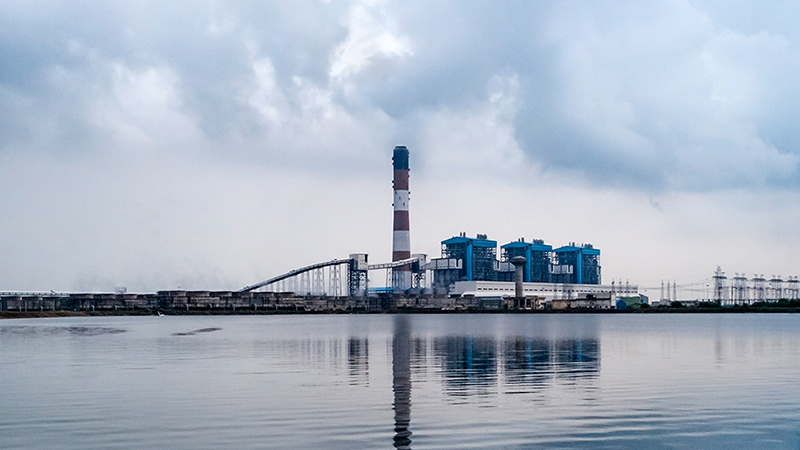Thermal power plants produce more than 65 percent of electricity in India, with the private sector contributing more than 35 percent of that figure. Bajaj Group’s wholly owned subsidiaries Bajaj Energy Limited and Lalitpur Power Generation Company Limited (LPGCL) are the leading private power generators in India, with an aggregate capacity of 2,430 megawatts. The group aspires to enhance its communities’ quality of life by supplying reliable, affordable, thermal-generated power that contributes to the sustainable development of India.

AWS has helped us increase our business application availability, reliability, and performance while reducing operations costs.”
Anil Yadav
General Manager of IT, Lalitpur Power Generation Company
Choosing an Experienced Partner for SAP on AWS Migration
Bajaj Energy uses SAP as its enterprise resource planning system across its divisions. Previously, Bajaj Energy was running SAP ECC on an Oracle database from an on-premises data center. However, the SAP servers were approaching end of life, so the company wanted to explore other hosting options. Reducing operational costs and promoting efficiency were the company’s top priorities.
Bajaj Energy worked with its IT partners, including AWS Partner Stannik Technologies LLP, to evaluate running SAP in a colocated data center and on the public cloud. Stannik, whose founder helped set up Bajaj Energy’s SAP system on premises, proposed that the company migrate its SAP workloads to the Amazon Web Services (AWS) Cloud to streamline operations and prepare the organization for eventual migration to SAP S/4HANA, which runs optimally on the cloud.
Anil Yadav, general manager of IT at Lalitpur Power Generation Company, says, “We saw the benefit of working with Stannik as an experienced AWS migration partner that was also familiar with our legacy systems for this large-scale project. On Stannik’s recommendation, we chose AWS for its high availability and its proposed cost. AWS has a robust architecture with multiple Availability Zones for any single region, which we valued for our mission-critical SAP workloads.”
Adopting a Staged, Lift-and-Shift Approach with Database Upgrade
Bajaj Energy and Stannik used a lift-and-shift approach to move SAP ECC workloads and its associated Oracle database to Amazon Elastic Compute Cloud (Amazon EC2) instances. The migration also included an upgrade to the company’s Oracle database and conversion from Unix to a LINUX operating system. Bajaj Energy now uses Amazon Simple Storage Service (Amazon S3) for snapshots and backups, and it relies on AWS Lambda to automate the start and stop of non-production systems such as quality assurance during office hours.
Bajaj Energy completed the SAP on AWS migration in stages, beginning with the development environment. This allowed teams to precisely calculate the required downtime to migrate production systems and plan accordingly. As a result, the company experienced no unplanned downtime during migration. Stannik also helped move workloads in parallel to accelerate the process.
Setting Up an Automated, Affordable DR Site
Disaster recovery (DR) is an aspect that has greatly improved since the migration. Bajaj Energy used CloudEndure, an AWS company, to replicate SAP data from its primary site to the DR site on the AWS Cloud. The company had been planning to build out a DR site for several years, a project that kept getting postponed due to complexity and cost. “The ease of setting up an affordable DR site is a major benefit of running SAP on AWS,” Yadav says.
Provisioning Testing Resources in 15–20 Minutes
The procurement of testing resources was another issue that often plagued Bajaj Energy’s teams in its on-premises SAP environment. Provisioning new SAP instances typically took weeks in order to complete configurations and installations. “Whenever our development team asked for testing servers, it was a very time-consuming task,” Yadav relates. On AWS, however, it takes just 15–20 minutes to provision SAP instances.
Yadav adds, “Testing is the most critical part of IT. We can now tweak and optimize our SAP environment by taking a snapshot of any system and simply recreating it in another Availability Zone or subnet testing environment. In this way, the AWS migration has transformed our development work.” Furthermore, when testing is complete, developers can easily terminate the instances provisioned for the task, which also contributes to cost savings.
Saving Time on Monitoring and Reporting While Improving Performance
Because Bajaj Energy no longer needs to monitor its data center and temperature control 24×7, the company can reallocate three to four staff members to more value-added tasks. These team members are working to improve the internal user experience on SAP and brainstorm process innovations that could benefit thermal power operations.
“We’re saving a huge amount of time that was formerly spent on monitoring, troubleshooting, and logging cases with original equipment manufacturers. The technical team responsible for this area is now involved in our business development,” says Rajesh Sharma, deputy general manager of IT at Lalitpur Power Generation Company.
Bajaj Energy has also seen a 10–20 percent performance improvement since migrating SAP to AWS, which has enhanced user experience. Sharma and Yadav attribute the improvement to the scalability of the AWS Cloud and right-sizing instances to provide the optimum amount of compute power to variable SAP workloads. Reporting, for example, is faster for Bajaj Energy’s SAP users. Reports such as bills of material and finance ledgers, which took 5–10 minutes on premises, are now generated in 3–4 minutes on AWS.
Going All-in on AWS, Modernizing with SAP S/4HANA
Based on the success of the SAP implementation on AWS, Bajaj Group has decided to go all-in on the AWS Cloud for other projects. It’s currently migrating the SAP workloads for its sugar division to AWS and plans to modernize SAP applications across divisions to SAP S/4HANA. Bajaj Energy is also exploring the Internet of Things (IoT) to support predictive plant maintenance.
Yadav concludes, “We’ve saved a lot by avoiding CapEx investments and have decided not to invest in hardware moving forward. For all future applications, we will look first to the AWS Cloud and software as a service. AWS has helped us increase our business application availability, reliability, and performance while reducing operations costs.”

